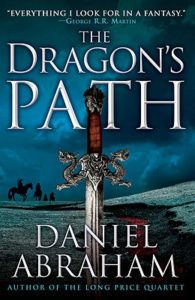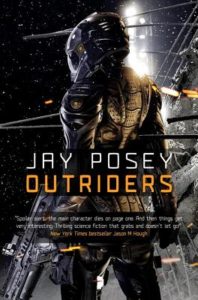Tim Recommends a Book 002: The Dragon’s Path by Daniel Abraham
I first discovered Abraham with his first series, The Long Price Quartet, the first novel of which is A Shadow in Summer. That series is pretty much a perfect dissection of fantasy literature, thoughtful when most fantasy is brash, character-driven when too much of the genre is about plot coupons and quest lines. But I wouldn’t recommend that book as a starting point for Abraham’s work, simply because it is so very niche. I think it’s the best fantasy series of our generation, easily rivaling Wolfe, Tolkien and Erikson in complexity and depth, if not page count.
But that’s not the book (or series) I’m recommending in this post! After he finished The Long Price Quartet, which struggled to find an audience, Abraham wrote The Dragon’s Path, the first book in the five-volume The Dragon and the Coin. The final book in this series just came out, so I feel comfortable recommending it.
I like to describe The Dragon’s Path as fantasy for people who really love fantasy, as well as for people who don’t think they like fantasy but have actually only been reading shitty versions of the genre. It focuses on a small group of people in the middle of an epic setting, facing down a war that could end the world, or at least change it forever. It has all the elements of traditional fantasy, from weird races to dragons to magic swords (there’s even a spider goddess and her strange cult!) without leaning on any of these things so heavily as to ignore plot or character. And oh, the characters! Abraham is my model for creating characters. There’s nothing these people did that felt wrong or forced, and the way Abraham establishes motivation in gentle layers is a lesson in itself. The depth he brought to The Long Price is on clear display here.
But the final reason I think you should read this book is the plotting and structure. I don’t know Abraham’s process, how precisely he plots each step of his books or the series overall, but when I finished The Dragon’s Path the first thing I did was outline it chapter by chapter. The structure is that good. It’s perfectly paced without feeling rushed, it has space for character development without lingering on frippery, and the larger plot hits each of its beats in perfect stride. It’s not just a well imagined book. It’s well executed, and that’s rare.
I’ve often said that becoming a writer ruins the joy of reading, because you’re scraping through the pages looking for mistakes and letting craft awareness spoil the fun of a good book. But a book like The Dragon’s Path highlights the other side of that coin – when you read a book that is this well written, this well plotted, and this well crafted, the joy of reading it as a writer is all the greater.
Buy the book here! And once you’re done with it, the rest of the series (as well as The Long Price Quartet) can be found here! Enjoy!

